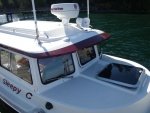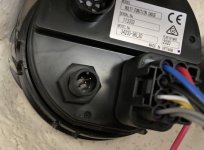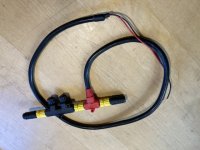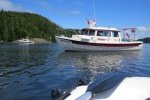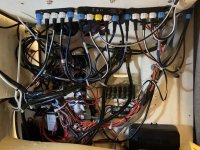jkidd
Active member
- Joined
- Oct 23, 2006
- Messages
- 1,681
- Reaction score
- 5
- C Dory Year
- 2007
- C Dory Model
- 22 Cruiser
- Hull Identification Number
- CDo22670C707
- Vessel Name
- Voyager
This is kind of an old picture, but it works the same.
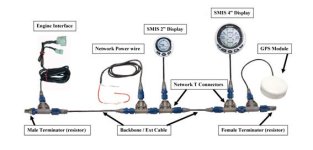
Back at the engine you have the engine interface connected to a tee with a terminator resistor on the end. Some where in the middle there will be a tee that supplies power to the network. If you follow the wire coming out of the gauge it should go to a tee. All you have to do, disconnect the wire on the tee and add another tee to connect the gps module. The tee for the power can be any where between the two terminators. To add any device you just break a connection along the length of the backbone add a tee and add the new device. The terminators need to stay at the ends of the cable.

Back at the engine you have the engine interface connected to a tee with a terminator resistor on the end. Some where in the middle there will be a tee that supplies power to the network. If you follow the wire coming out of the gauge it should go to a tee. All you have to do, disconnect the wire on the tee and add another tee to connect the gps module. The tee for the power can be any where between the two terminators. To add any device you just break a connection along the length of the backbone add a tee and add the new device. The terminators need to stay at the ends of the cable.

